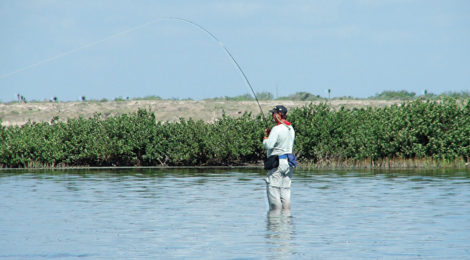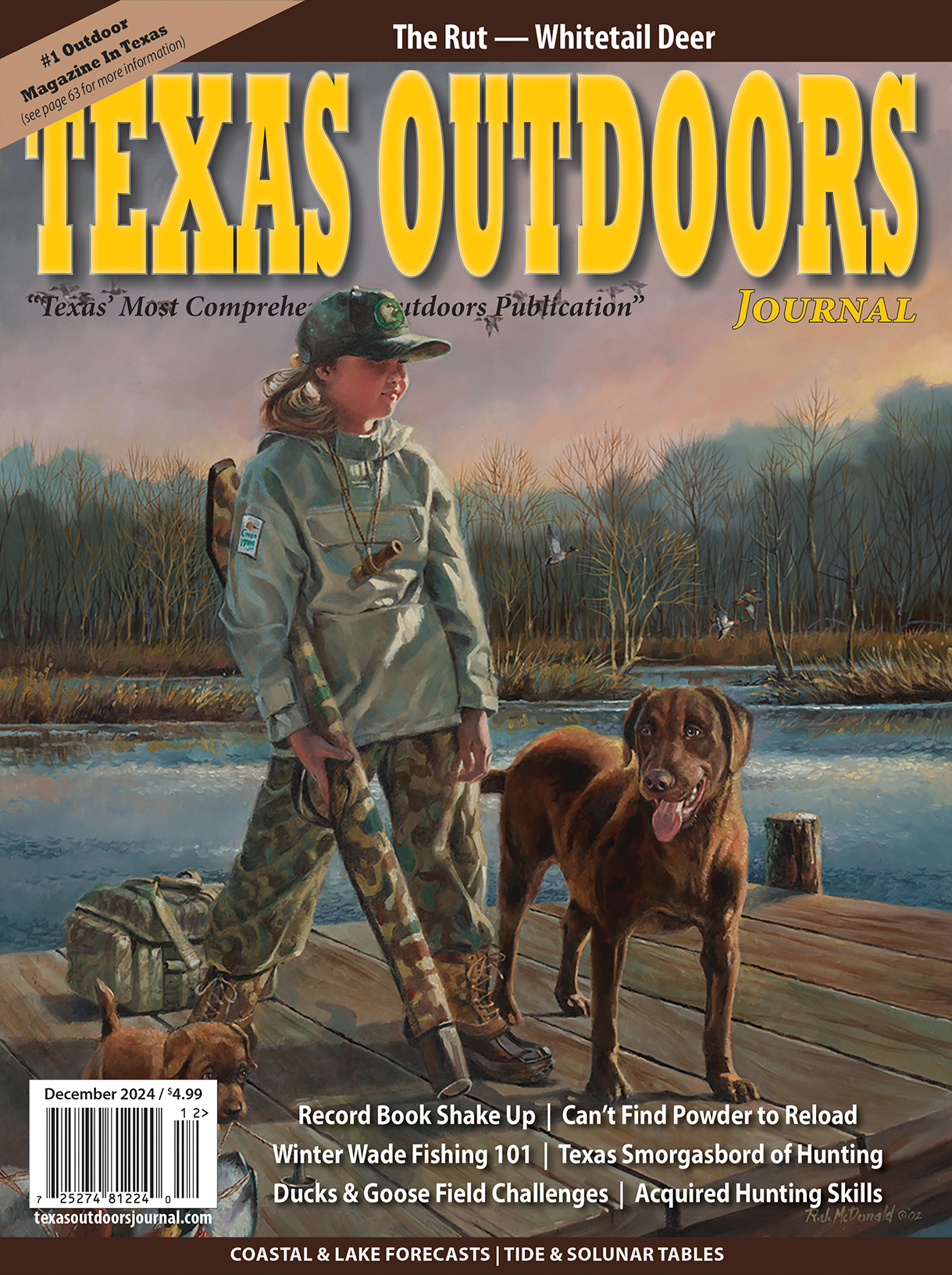
Time to Get Wet
Rising temperatures and more active fish signals many bay anglers it’s time to wade.
Story and Photography By Danno Wise
June is the start of the summer season along the Texas coast. Summer wade fishing in coastal bays is a long-standing tradition and is even considered by some to be somewhat of a rite of passage for inshore anglers in the Lone Star State. However, it is much more than that. Summer wade fishing is a chance for anglers to beat the summer heat and catch plenty of fish at the same time. For those unfamiliar, or less experienced with wade fishing inshore waters, there are a few things to be aware of before taking a plunge over the gunnel.
Where to Wade
To begin with, not all water is productive. This is true whether fishing from a boat or on foot. Therefore, it is essential to identify the most productive stretches of water in order to increase the odds for success. This is even more critical when wading because it takes longer to reposition if there aren’t fish in the area. So, anglers need to be aware of how to identify potential productive stretches of water and eliminate areas that are not holding fish.
In order to do this, wade fishermen must be much more diligent in spotting fish “signs.” Active bait is the most obvious sign. Any flat holding bait is likely to be holding some fish. While it may be worth shutting down the boat for a few casts if one or two mullet are spotted, it doesn’t necessarily make sense for a wade fishermen to hop overboard every time a baitfish is sighted. Instead, waders are best served waiting until there is consistent bait activity – skipping shrimp, jumping mullet or swirling baitfish – before bailing out of the boats.








